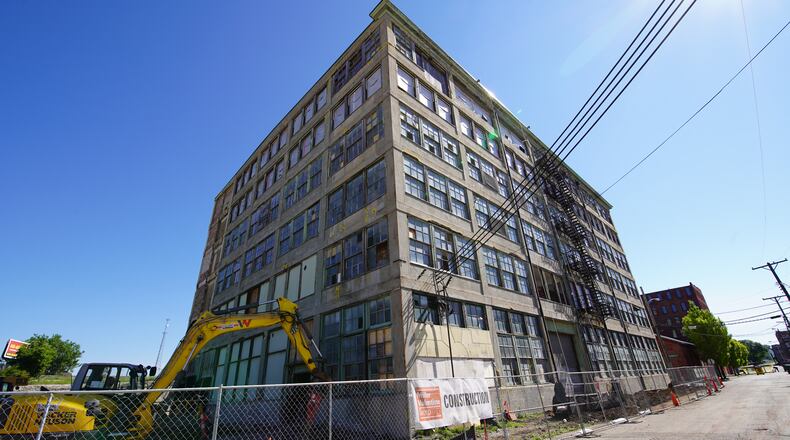Nearly a year ago, the Dayton Daily News first reported that the Ohio Development Services Agency had allocated $1.8 million in state historic tax credits to support the renovation of the building at 15 McDonough St.
Kentucky-based developer Weyland Ventures had proposed spending more than $18.2 million to convert the six-story building, just east of the Oregon District, into modern offices for high-tech, creative design and other firms and users, this news outlet reported last year.
Rehab work began last month, Miller-Valentine said Tuesday, noting that the company is indeed partnering with Weyland Ventures on the project.
MORE: Search of local NASIC contractor looked for 'co-conspirators'
Gosiger Inc., a machine tool and robotics automation firm at 108 McDonough St., will lease the first two floors of the six-story building.
“The renovation of the Dayton Motor Car Building enables our family business to continue to grow and expand in our current location while, at the same time, taking part in the revitalization of our neighborhood,” Jerry Pressel, Gosiger chief financial officer, said in Miller-Valentine’s release.
Apex Commercial Group will handle leasing for the remaining four floors, which are about 12,500 square feet each, with the ability to subdivide each floor. “The building’s concrete structure, open floor plates and expansive windows make it an ideal setting for office tenants looking for a contemporary space with lots of natural light,” Miller-Valentine said.
“This is exactly the type of project we are excited to be a part of,” Tony Witt, principal of Apex Commercial Group, said in the Miller-Valentine statement. “We look forward to contributing to Dayton’s renaissance by attracting creative and new office tenants to this project.”
Built around 1875, the iconic Dayton Motor Car Building originally housed a farm implement center and later produced automobiles, including the Stoddard-Dayton Motor Car.
The building is part of the Dayton Motor Car Company Historic District, which was named to the National Register of Historic Places in 1984.
MORE: 'You've got to live by what you make': Crown Equipment grows company in West Central Ohio.
“This building represents a rich part of Dayton’s history that hasn’t been told for a long time. We are thrilled to restore this place to its former glory,” said Mary Kate Lindsey, project manager with Weyland Ventures. “The spirit of innovation that long animated the site will continue on for another century or more.”
To maintain the iconic architectural elements of the building, Miller-Valentine said it will restore the original windows and the exterior of the building and will run the mechanical, electrical and plumbing systems through the floors to leave the ceilings exposed. Antique fire doors will be re-purposed throughout the interior.
Funding sources for the $18.2 million project include the Ohio Historic Preservation tax credit, a Citywide loan, a Downtown Dayton Investment Fund loan and a Jobs Ohio Revitalization grant.
The project is expected to be completed during the first quarter of 2020.
Weyland Ventures and Miller-Valentine previously collaborated on the Wheelhouse building, which now houses a restaurant, commercial space and apartments.
MORE: To the rescue: Beavercreek firm invents pilot extraction system
“We are very pleased to be Weyland Ventures’ construction partner on this creative project and to be part of the major redevelopment efforts in downtown Dayton,” said Dave Dickerson, President Midwest sales and development for Miller-Valentine. “Weyland Ventures has a strong interest in and intuitive sense of the downtown Dayton market. It’s exciting to be part of this long-term effort to revitalize downtown and to have a hand in shaping the future of these historic buildings.”
About the Author


